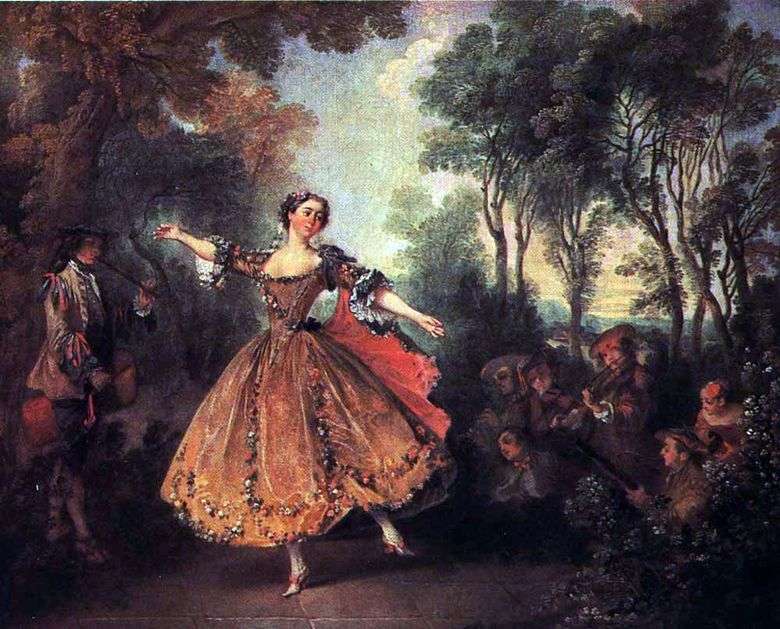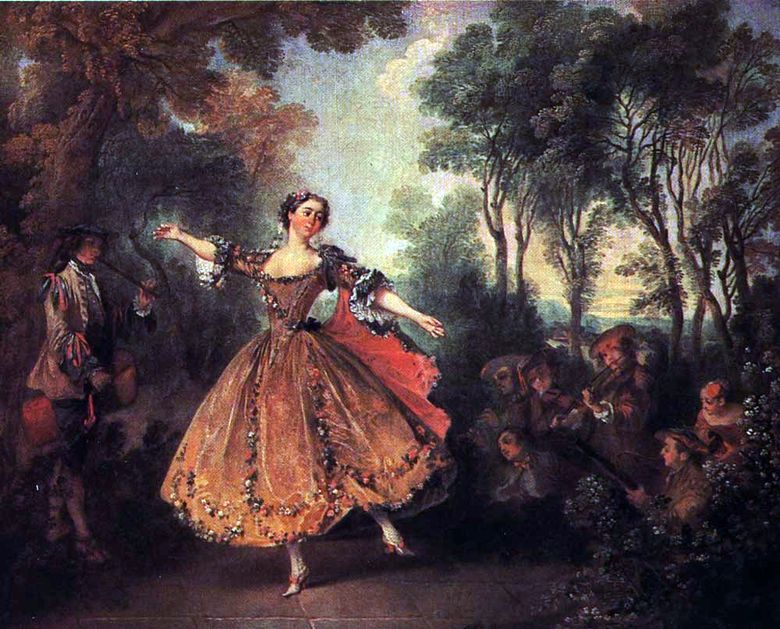
Painting by the French artist Nicola Lancre “The Dancer Camargo”. The size of the painting is 45 x 55 cm, oil on canvas. Lancre was one of the most talented followers of Antoine Watteau. The painter Lancre created many portraits of actors and actresses, often showing portraits in genre scenes or in work.
Such is this small portrait of one of the most educated women of the 18th century, a friend of the philosophers Helvetius and Voltaire – Marie-Anne de Cuypi Camargo, a famous ballerina who introduced numerous innovations in ballet art, including the performance of male ballet receptions of cabrioles and anthrash, used today. day, as well as new jumps, pirouettes and fouette. Marie-Anna Camargo, as a ballet reformer, shortened the skirts to be able to move more freely, and, according to contemporaries, often performed without panties. Maria Anna de Kupi Camargo was born in Brussels on April 15, 1710, originated from an ancient noble family.
On the stage of the Paris Opera Camargo debuted May 5, 1726. She danced in a huge number of ballets and theatrical ballet productions; at the insistence of her lover, Count Clermont, Camargo left the scene in 1734. However, six years later, in 1741, she continued her performances at the Grand Opera. After her return to the stage, Camargo enjoyed tremendous success.
Full of gaiety and brilliance, the grace of Camargo, its cheerfulness and virtuosity of performing the dances were the complete delight of many famous and famous people in Europe. Marie-Anne de Cuypi Camargo finally left the ballet in 1751, gifted with a luxurious royal pension of £ 1,500. Marie-Anne de Kupi Camargo died in Paris on April 28, 1771. Buried Camargo in the church of St. Roch in white robes and a white coffin, according to the custom adopted in those days for unmarried women.
 Bailarina Camargo – Nicola Lancre
Bailarina Camargo – Nicola Lancre Camargo Dancer – Nicola Lancre
Camargo Dancer – Nicola Lancre Self Portrait by Nicola Lancre
Self Portrait by Nicola Lancre Bathers by Nicola Lancre
Bathers by Nicola Lancre Garden Society by Nicola Lancre
Garden Society by Nicola Lancre Bathing ladies by Nicola Lancre
Bathing ladies by Nicola Lancre Society in the park by Nicola Lancre
Society in the park by Nicola Lancre Lady and gentleman with two girls in the garden by Nicola Lancre
Lady and gentleman with two girls in the garden by Nicola Lancre